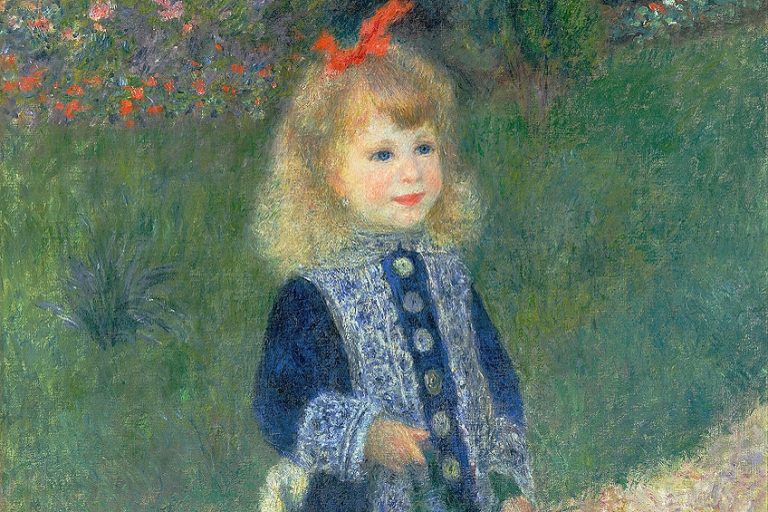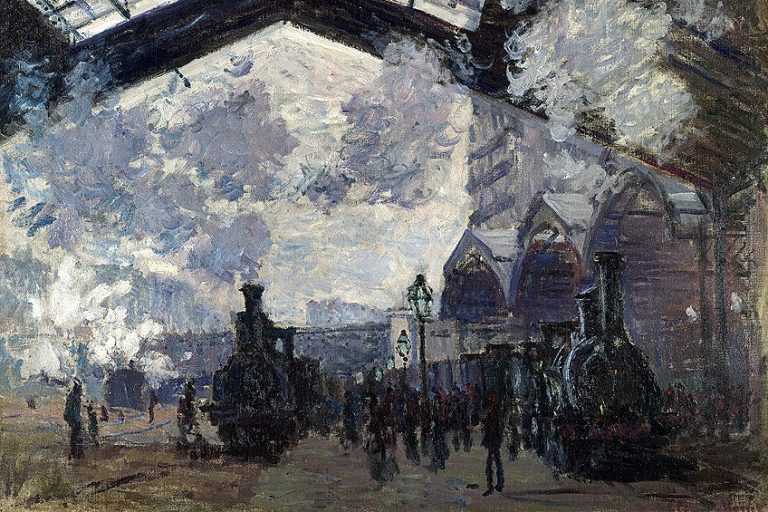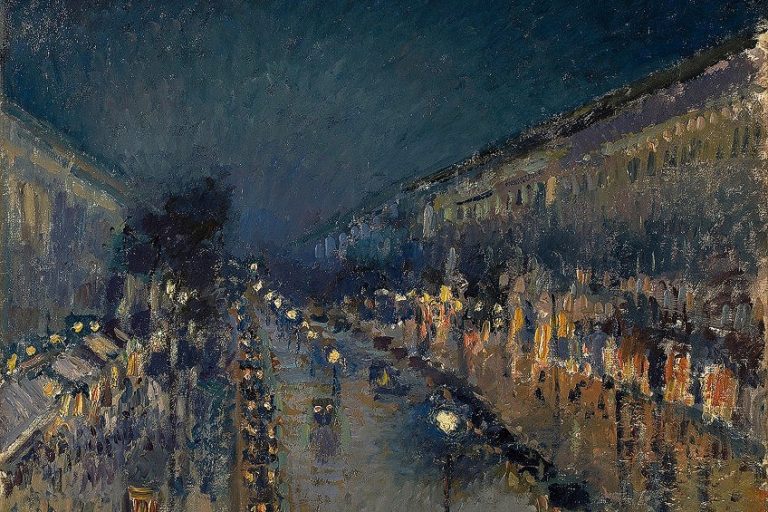“Self-Portrait Facing Death” by Pablo Picasso – A Detailed Analysis
Pablo Picasso’s Self-Portrait Facing Death stands as a profound testament to the artist’s introspective journey and his confrontation with mortality. Created in 1972, near the twilight of his illustrious career, this self-portrait encapsulates Picasso’s relentless exploration of the human condition and his unyielding commitment to artistic reinvention. Rendered with stark lines and bold contrasts, the painting captures the essence of existential angst and the relentless passage of time. Through his penetrating gaze and somber expression, Picasso invites viewers into a dialogue about the complexities of existence and the inevitability of our shared fate. This seminal work not only showcases Picasso’s mastery of form and technique but also serves as a poignant reflection on the universal themes of life, death, and the enduring power of artistic expression.
Key Takeaways
- Self-Portrait Facing Death is Pablo Picasso’s contemplation on his mortality, completed in the final year of his life.
- Picasso employs a simplified and abstract visual language, conveying emotion and introspection through stark lines and forms.
- The self-portrait invites a universal reflection on aging and the inevitable approach of death, showcasing Picasso’s confidence and clarity even in his last moments.
Overview of Artwork
| Artist | Pablo Picasso (1881 – 1973) |
| Date Created | 1972 |
| Medium | Oil on canvas |
| Genre | Self-portrait and Expressionism |
| Period/Movement | Contemporary art |
| Dimensions (cm) | 130 x 97 |
| Series/Versions | N/A |
| Where Is It Housed? | Private collection |
| What It Is Worth | Estimated to be highly valuable due to its significance as one of Picasso’s final works. |
Pablo Picasso’s Self-Portrait Facing Death is a powerful representation of an artist confronting his own mortality. Created in 1972, less than a year before Picasso passed away, the artwork is a testament to his enduring engagement with the themes of existence and the inevitability of death. Known for his extraordinary contribution to the world of art and his ability to continually reinvent his style, Picasso utilized crayon on paper for this profound piece, marking a departure from the oil paints that characterized much of his earlier work.

The artwork is a stark insight into the artist’s abstract interpretation of his final months. Known for the intense expressiveness of his self-portraits, Picasso captures a raw and palpable confrontation with the end of life in Self-Portrait Facing Death. Unlike the robust and vibrant depictions in his earlier years, this piece conveys a sense of introspection and acceptance. The self-portrait not only encapsulates the artist’s personal reflection on his age and impending death, but it also invites viewers to ponder the universal human condition.
Picasso’s bold lines and the haunting gaze of his simplified forms draw the viewer into a silent dialogue with the artist, one that echoes beyond the individual to touch on a collective understanding of our finite existence.
Historical Context
Self-Portrait Facing Death was completed on June 30, 1972, during the later stages of Picasso’s life. At this time, the artist was 91 years old and was reflecting on his life and the inevitability of death. The artwork embodies the culmination of Picasso’s experiences, thoughts, and emotions as he approached the end of his prolific journey.
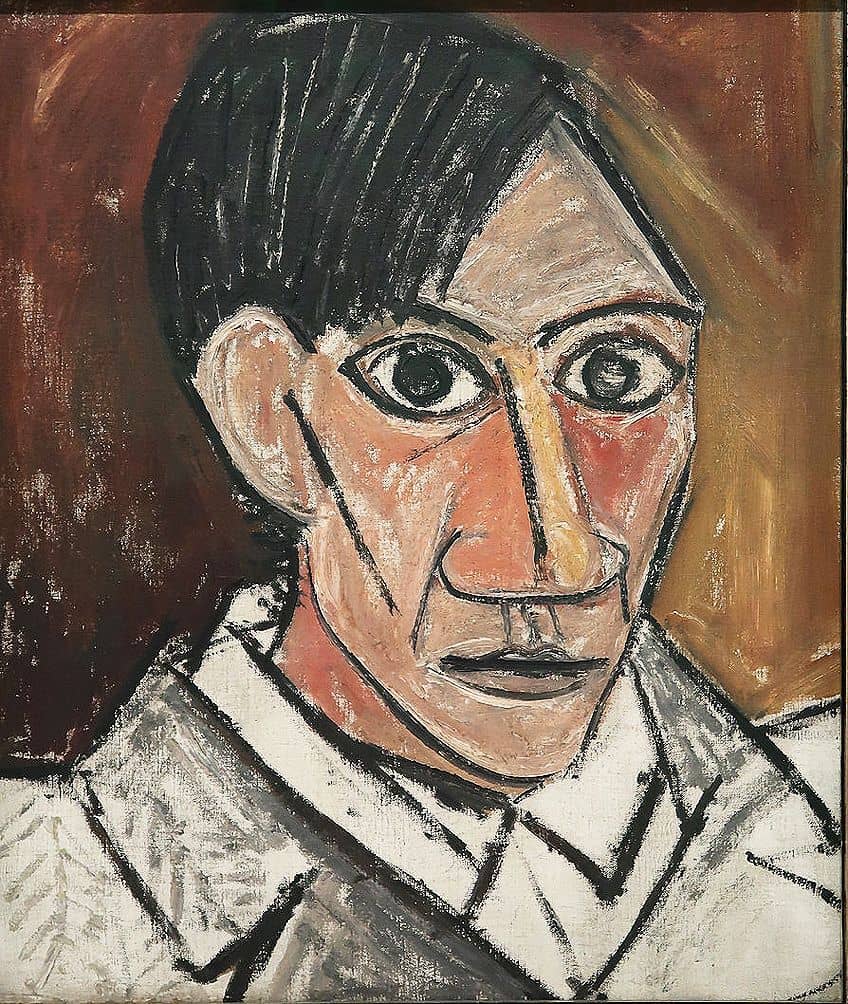
Picasso’s Experiences With Death
Throughout his life, Picasso encountered death on multiple occasions, which subsequently influenced his works. His confrontation with personal loss and the awareness of his own mortality are evident in this self-portrait.
This piece is starkly honest, presenting a man who is both recognizing and accepting the closeness of death.
Formal Analysis
Pablo Picasso’s Self-Portrait Facing Death captures the artist’s raw emotion and final contemplation of mortality. This work employs a stark visual composition, meticulous technique, and profound thematic interpretation to express his confrontation with the end of life.
Visual Composition
The painting’s composition centers around Picasso’s gaze, which holds a palpable expression of fear. His eyes are wide, almost startled, suggesting an intense recognition of his mortality.
The form of the figure, depicted with deliberate deep lines of age, is both a reflection of the self and a universal symbol of human vulnerability.
Technique
Picasso utilized a combination of drawing and painting techniques, employing crayon on paper to create this piece. The lines are bold and angular, showing the influence of Cubism, an avant-garde movement that Picasso himself co-founded. These sharp lines contrast with the softer, more rounded forms prevalent in his Rose and Blue periods, signaling a departure from the aesthetics of his earlier portraits.
Thematic Interpretation
This self-portrait is more than a mere representation of self; it is an intense confrontation of death. Fear of death and the artist’s grappling with it are evident in the urgent strokes and the disjointed composition. Yet, some interpret the work as an acceptance of fate, where the mixed expression might resonate with the artist’s reconciliation with his own life cycle.
This has the effect of rendering the piece a final avant-garde exploration of the surreal nature of life and death.
Reflecting on a Legacy
Pablo Picasso’s oeuvre is monumental, with self-portraits being a defining feature of his enduring legacy. These artworks capture the evolution of both his artistic style and his self-perception. Self-Portrait Facing Death, created on June 30, 1972, is particularly poignant as it reveals Picasso’s introspection and acceptance of his mortality.
In Picasso’s 1901 Blue Period, marked by somberness and cool tones, his early self-portraits delve into melancholy themes.
Fast forward to 1972, during his Late Works period, Self-Portrait Facing Death embodies stark simplicity and a direct confrontation with mortality. Bold lines capture existential angst, showcasing Picasso’s lifelong exploration of the human condition. These self-portraits mirror his evolving psyche and artistic mastery across distinct periods.
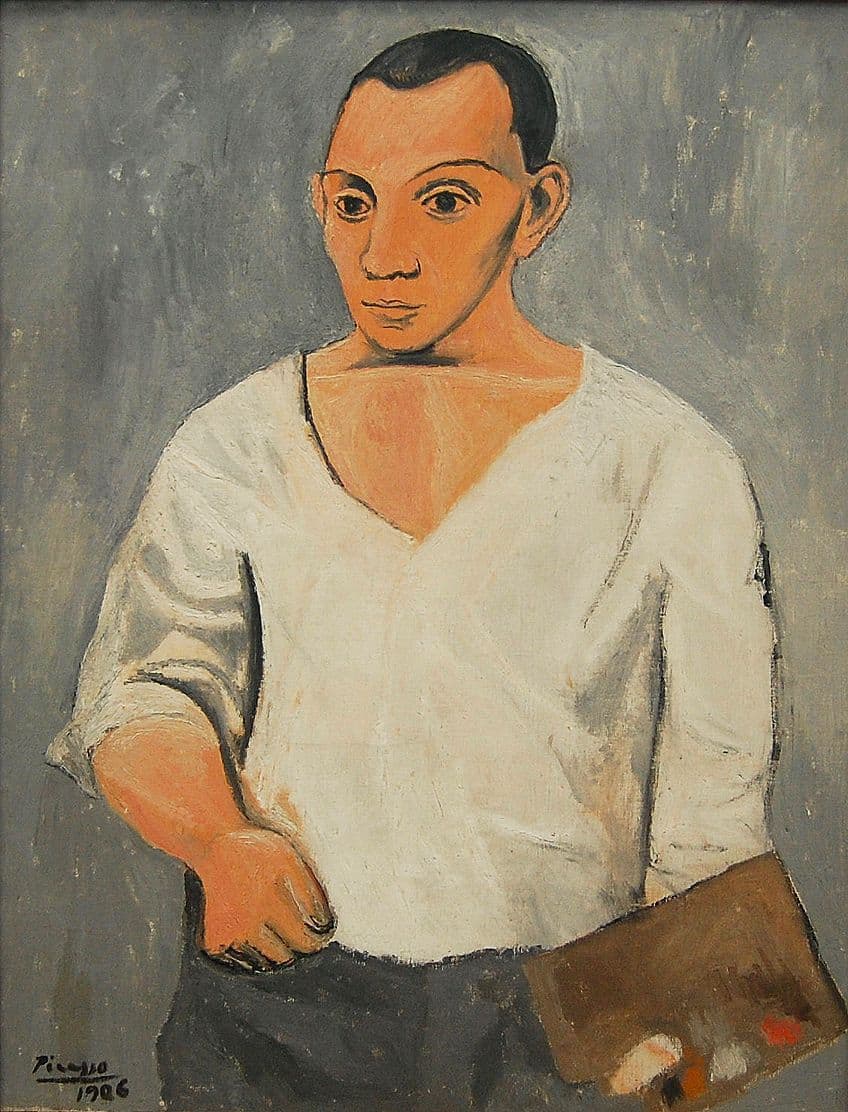
Critics like Pierre Daix have regarded these self-portraits as more than mere artistic expressions. They are seen as a mirror to Picasso’s psyche, presenting his life journey through a candid lens. The raw honesty of Self-Portrait Facing Death strips away any contrivance, showing an unembellished figure grappling with the inevitable.
While Picasso is often associated with his innovative contributions to sculptures and paintings, his self-portraits stand as a testament to his introspective nature.
Every stroke and color choice in his artwork provided insight into moments from his prolific career. Despite the absence of photos, these self-portraits visually articulate Picasso’s personal and artistic narrative with profound clarity. In summing up Picasso’s pantheon of work, it becomes evident that his self-portraits are integral to understanding the man behind the canvas. They are not just reflections in a mirror but an artist’s dialogue with time, confronting the human condition with every brushstroke.
Self-Portrait Facing Death stands as a testament to the artist’s profound introspection and his unyielding exploration of mortality. Through stark simplicity and a confrontational gaze, Picasso invites viewers into a dialogue about the human condition and the inevitability of our shared fate. This late work encapsulates the essence of existential angst and serves as a poignant reflection on life’s complexities. Picasso’s mastery of form and technique, combined with his deep thematic exploration, cements this self-portrait as a timeless testament to the enduring power of artistic expression.
Frequently Asked Questions
How Was Picasso’s Approach to Mortality Reflected in His Final Self-Portrait?
In Picasso’s last self-portrait, Self-Portrait Facing Death, he depicted himself with stark, skeletal features that bring to mind an x-ray or a skull. Painted in 1972, the self-portrait captures a raw and unfiltered acknowledgment of his mortality, contrasting the vigor present in his earlier works.
What Are the Notable Differences Between Picasso’s Early and Late Self-Portraits?
Early self-portraits of Picasso, such as the one from 1896 when he was just 15 years old, often displayed the artist with a strong, youthful appearance, showcasing his emerging talent. In contrast, his final self-portrait illustrates a man coming to terms with his age and impending death. The latter is a visual manifestation of his inner psyche rather than a realistic representation, demonstrating a drastic evolution in style and theme over the years.
Isabella studied at the University of Cape Town in South Africa and graduated with a Bachelor of Arts majoring in English Literature & Language and Psychology. Throughout her undergraduate years, she took Art History as an additional subject and absolutely loved it. Building on from her art history knowledge that began in high school, art has always been a particular area of fascination for her. From learning about artworks previously unknown to her, or sharpening her existing understanding of specific works, the ability to continue learning within this interesting sphere excites her greatly.
Her focal points of interest in art history encompass profiling specific artists and art movements, as it is these areas where she is able to really dig deep into the rich narrative of the art world. Additionally, she particularly enjoys exploring the different artistic styles of the 20th century, as well as the important impact that female artists have had on the development of art history.
Learn more about Isabella Meyer and the Art in Context Team.
Cite this Article
Isabella, Meyer, ““Self-Portrait Facing Death” by Pablo Picasso – A Detailed Analysis.” Art in Context. February 23, 2024. URL: https://artincontext.org/self-portrait-facing-death-by-pablo-picasso/
Meyer, I. (2024, 23 February). “Self-Portrait Facing Death” by Pablo Picasso – A Detailed Analysis. Art in Context. https://artincontext.org/self-portrait-facing-death-by-pablo-picasso/
Meyer, Isabella. ““Self-Portrait Facing Death” by Pablo Picasso – A Detailed Analysis.” Art in Context, February 23, 2024. https://artincontext.org/self-portrait-facing-death-by-pablo-picasso/.





